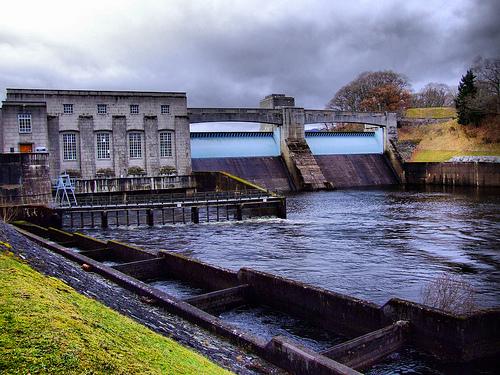
“For many of us, water simply flows from a faucet, and we think little about it beyond this point of contact. We have lost a sense of respect for the wild river, for the complex workings of a wetland, for the intricate web of life that water supports.”
- Sandra Postel, director and founder of the Global Water Policy Project
Water of sufficient quantity and quality is necessary to sustain both human populations as well as aquatic ecosystems. Over the years, we have witnessed legal battles over access to water at the border of Florida and Georgia; discussions about piping water over the American Rockies; and iconic clashes between the incompatible goals of building large water infrastructure projects for agriculture, electricity, and other human needs while trying to maintain the natural flow of rivers crucial to aquatic species. Most recently, a major drought in California has highlighted the conflicts between farmers, environmentalists, households, and industry over water use allocations.
Large water infrastructure projects dramatically alter the natural flow regimes of rivers, and consequently result in major disruptions to river ecosystems and the organisms that rely upon them. Dams, for example, can block fish passages, change the quantity and timing of water flow, promote erosion downstream, and fundamentally change upstream landscapes by flooding them with reservoirs.
Yet we build dams, because they can be a source of hydropower, flood protection, and reliable short-term water supply. As these benefits can accelerate poverty alleviation and development around the world, international organizations such as the World Bank and USAID are now footing the bill for large water infrastructure projects. However, dams built on the basis of ensuring sufficient quantities of water for humans can be ultimately undermined by the negative water quality and ecosystem consequences of long-term changes to the natural flow of rivers. In response, people are increasingly interested in incorporating ecological principles into their work so both natural capital and ecosystems can be preserved while providing sources of energy and water security where they are most needed.
A group of engineers, ecologists, and economists in a SESYNC Pursuit are working towards developing strategies that could integrate these dual purposes, with the goal of providing decision makers, engineers, and economists with the tools to both maximize future reliability of water infrastructure and minimize costs to the environment.
There are at least three levels of decision making processes the group is tackling. The first set revolves around the design decisions that go into dam construction and operation—i.e., how to build a dam. Ecological factors are sometimes thought of as a constraint on design; however, an explicit analysis of the tradeoffs between ecosystem needs and engineering possibilities should reveal the most cost-effective strategies for different scenarios.
The second set of questions addresses how to resolve discrepancies between the needed and available temporal and spatial data required to make informed decisions. Depending on the location and purpose, for example, could several small dams accomplish the same goal as one large dam while protecting sensitive environments or facilitating the migration of important fish species? By identifying key ecosystem services to protect and maintain, engineers and ecologists can more explicitly analyze tradeoffs between environmental concerns and the services a dam provides. Even if this involves a time investment to monitor the behavior of a commercially-important fish species, or water variability in a previously unknown stretch of river, the results of reduced uncertainty could be valuable in the long run.
On a broader level, the group hopes to provide an innovative framework for policy-level decision making about water infrastructure in the face of major uncertainty about future water supply and demand estimates. With high uncertainty, there may be more reliable and less costly ways to meet the water needs identified by policy makers instead of building permanent structures on the landscape. Rather than make a large initial investment in dam construction, new green infrastructure or land preservation practices could expand the range of potential options for successive generations, instead of “locking us in” to the same old fights about water allocation.
Above photo: Pitlochry Power Station dam and fish ladder
Credit: xlibber, Flickr/Creative Commons